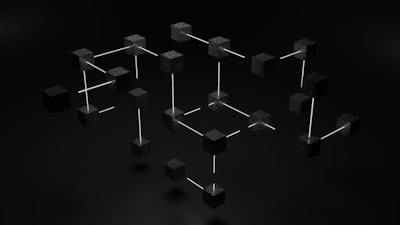Blockchain technology has taken the world by storm, with its innovative approach to secure digital transactions. But what exactly is blockchain and how does it work? In this article, we will explore the inner workings of this revolutionary technology and how it is changing the way we conduct business.

Introduction to Blockchain
At its core, a blockchain is a digital ledger of transactions that is duplicated and distributed across the entire network of computer systems on the blockchain. Each block in the chain contains a number of transactions and every time a new transaction occurs on the network, a record of that transaction is added to every participant’s ledger.
The key feature that sets blockchain apart from traditional ledgers is that it is decentralized. This means that there is no single, central authority controlling the ledger. Instead, the network is maintained by a network of computers, all of which have a copy of the ledger and work together to ensure its integrity.
This decentralization is what makes blockchain so secure. Since there is no central point of control, there is no single point of failure. This means that even if one computer on the network is hacked or goes offline, the network as a whole will continue to function.

Blockchain Transactions
When a transaction is made on a blockchain network, it is broadcast to the entire network. Each computer on the network then independently verifies the transaction and adds it to their copy of the ledger.
This verification process is known as consensus. In most blockchain networks, consensus is achieved through a process called proof of work. In this process, computers on the network compete to solve a complex mathematical problem. The first computer to solve the problem gets to add the next block to the chain and is rewarded with a small amount of cryptocurrency.
Once a block is added to the chain, it cannot be altered or deleted. This is because each block contains a reference to the previous block, known as a hash. If any part of a block is altered, the hash will change and the block will no longer match the rest of the chain.

Security and Privacy
One of the biggest advantages of blockchain technology is its security. Since each block contains a reference to the previous block, any attempt to alter a block will be immediately apparent to the rest of the network. This makes it virtually impossible to hack or manipulate the blockchain.
Another major advantage of blockchain is its privacy. Each transaction on a blockchain network is anonymous, with the parties involved identified only by their unique digital signature. This means that sensitive information, such as financial data, can be securely transmitted and stored on a blockchain network without the risk of it being intercepted or stolen.
Blockchain Applications
Blockchain technology has a wide range of potential applications, from financial services to supply chain management. Some of the most promising areas for blockchain include:
- Digital currencies: Blockchain technology is the backbone of many digital currencies, such as Bitcoin and Ethereum.
- Smart contracts: Blockchain networks can be used to create self-executing contracts that automatically enforce the terms of an agreement.
- Supply chain management: Blockchain can be used to track goods as they move through the supply chain, making it easier to detect and prevent fraud.
- Identity verification: Blockchain can be used to create secure digital identities that can be used to verify a person’s identity without the need for a centralized authority.
Conclusion
Blockchain technology is a revolutionary new way of conducting transactions and managing data. Its decentralization and secure nature make it ideal for a wide range of applications, from financial services to supply chain management. With its many benefits, it’s no wonder that blockchain is quickly becoming one of the most important technologies of our time.







0 Comments